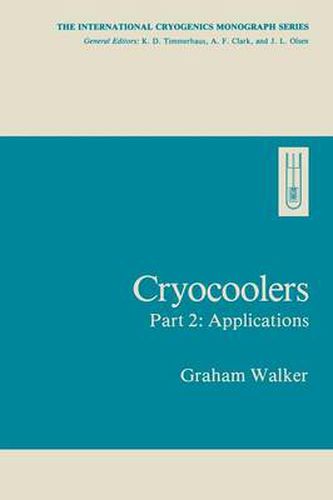Readings Newsletter
Become a Readings Member to make your shopping experience even easier.
Sign in or sign up for free!
You’re not far away from qualifying for FREE standard shipping within Australia
You’ve qualified for FREE standard shipping within Australia
The cart is loading…






This title is printed to order. This book may have been self-published. If so, we cannot guarantee the quality of the content. In the main most books will have gone through the editing process however some may not. We therefore suggest that you be aware of this before ordering this book. If in doubt check either the author or publisher’s details as we are unable to accept any returns unless they are faulty. Please contact us if you have any questions.
The rapidly expanding use of very low temperatures in research and high technology during the last several decades and the concurrent high degree of activity in cryogenic engineering have mutually supported each other, each improvement in refrigeration technique making possible wider oppor tunities for research and each new scientific discovery creating a need for a refrigerator with special features. In this book, Professor Walker has provided us with an excellent exposition of the achievements of this period, the fundamental principles involved, and a critical examination of the many different cryogenic systems which have led to a new era of low-level refrigeration. I feel fortunate to have had a part in the developments discussed in this book. During the early 1930s I constructed several rotary engines using leather vanes. Their performance was not good, but I was able to liquefy air. I had been impressed by the usefulness of leather cups in tire pumps and in Claude-type engines for air liquefaction. I was trying to find a way to avoid that part of the friction generated by a leather cup as a result of the radial force of the working gas on the cylindrical part of the cup. During the 1950s I built two efficient helium liquefiers in which essentially leather pistons were used.
$9.00 standard shipping within Australia
FREE standard shipping within Australia for orders over $100.00
Express & International shipping calculated at checkout
This title is printed to order. This book may have been self-published. If so, we cannot guarantee the quality of the content. In the main most books will have gone through the editing process however some may not. We therefore suggest that you be aware of this before ordering this book. If in doubt check either the author or publisher’s details as we are unable to accept any returns unless they are faulty. Please contact us if you have any questions.
The rapidly expanding use of very low temperatures in research and high technology during the last several decades and the concurrent high degree of activity in cryogenic engineering have mutually supported each other, each improvement in refrigeration technique making possible wider oppor tunities for research and each new scientific discovery creating a need for a refrigerator with special features. In this book, Professor Walker has provided us with an excellent exposition of the achievements of this period, the fundamental principles involved, and a critical examination of the many different cryogenic systems which have led to a new era of low-level refrigeration. I feel fortunate to have had a part in the developments discussed in this book. During the early 1930s I constructed several rotary engines using leather vanes. Their performance was not good, but I was able to liquefy air. I had been impressed by the usefulness of leather cups in tire pumps and in Claude-type engines for air liquefaction. I was trying to find a way to avoid that part of the friction generated by a leather cup as a result of the radial force of the working gas on the cylindrical part of the cup. During the 1950s I built two efficient helium liquefiers in which essentially leather pistons were used.